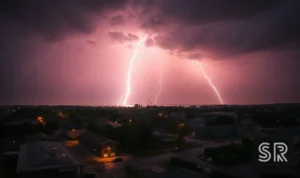Secrets Beneath the Crash: How a Failed Space Mission Exposed a Hidden Frontier of Science, Grief, and Risk
Individuals had entrusted their ashes to the mission, hoping for a final journey beyond the stars—a symbolic return to the cosmos.

“Secrets Beneath the Crash: How a Failed Space Mission Exposed a Hidden Frontier of Science, Grief, and Risk”
Here’s what you’ll learn when you read this story:
– A failed space capsule carried more than just tech—it held cannabis seeds bound for science and ashes meant for cosmic closure.
– The mission was part of a bold push to democratize space biology and memorialize lives beyond Earth.
– Behind the crash lies a deeper story about ambition, innovation, and the price of fast-track space exploration.
The Secret Payloads of Nyx: Cannabis, Ashes, and the Price of Progress
On June 23rd, a Falcon 9 rocket lifted off from Vandenberg Space Force Base in California, carrying a small but symbolically powerful spacecraft called ‘Nyx’. What followed wasn’t just another orbital launch—it was a convergence of frontier science, personal grief, and high-stakes engineering. When the capsule crashed into the Pacific Ocean two days later due to parachute failure, it didn’t just mark a technical setback; it exposed the fragile edge where private spaceflight, citizen science, and emotional legacy collide.
A Capsule with Purpose—And Mystery
The Nyx capsule, developed by German startup The Exploration Company (TEC), was designed to orbit Earth three times before returning safely to Earth. Among its 70 payloads were biological samples, DNA strands, fungi, algae—and something far less expected: cannabis seeds and human remains.
This wasn’t a rogue payload. The cannabis was part of an open-source experiment known as Martian Grow, aimed at testing how resilient plant matter reacts to the extreme radiation of polar orbit. The idea? To understand whether life—starting with cannabis—could one day survive on Mars or other extraterrestrial environments. It was a grassroots effort to “democratize space science,” according to the project’s creators.
Meanwhile, the human remains came courtesy of Celestis, a Texas-based company that offers space burial services. Over 160 individuals had entrusted their ashes to the mission, hoping for a final journey beyond the stars—a symbolic return to the cosmos.
But instead of a graceful descent, the capsule met disaster. Parachutes failed to deploy during reentry, causing the craft to slam into the ocean at high speed. All contents—seeds, ashes, experiments—were lost.
“Partial Success” in the Face of Failure
TEC labeled the outcome a “partial success.” While the spacecraft reached orbit, powered its systems, and re-entered the atmosphere successfully, the parachute system—which had not been drop-tested—failed catastrophically. TEC admitted they chose not to conduct these tests to cut costs and accelerate development.
In a public statement, CEO Lisa Huby took full responsibility:
“We apologize to our clients… partial success is often part of the road for those who take risks and push boundaries.”
She framed the crash not as a defeat, but as a lesson—a necessary step in rapid iteration and reusable spacecraft development. TEC plans to use the data gathered to improve the next version of Nyx, aiming for a faster, smarter return to flight.
More Than Just Seeds and Ashes
What made this mission truly unique wasn’t just the unusual cargo, but the intention behind it. Martian Grow was a citizen science initiative, funded through crowdfunding and driven by a belief that space research should be open to all—not just government agencies or big corporations. The cannabis seeds were meant to be grown upon return, studied across generations for mutations caused by cosmic radiation exposure.
Similarly, Celestis offered families a chance to honor loved ones with a celestial send-off. Though the ashes never returned home, the company said the mission still counted as successful, since the remains orbited Earth twice before the crash. As Celestis put it:
“They are now resting in the vastness of the Pacific, akin to a traditional sea scattering.”
It was a poetic attempt to soften the blow of loss—both of life and of hope.
The Bigger Picture: Fast, Cheap, and Risky
TEC’s approach reflects a growing trend in private spaceflight: do more, faster, and cheaper—even if that means accepting setbacks along the way. Their parachute decision highlights the trade-offs startups must make between safety, cost, and innovation.
While SpaceX has used similar parachute models in the past, TEC acknowledged that skipping drop-tests was a calculated risk. In doing so, they opened a conversation about what level of failure is acceptable in the name of progress.
Looking Ahead: From the Depths of the Pacific to the Edge of Discovery
Though the seeds and ashes are gone, the ideas behind them remain. Scientists say future missions will build on MayaSat-1’s original goals—Genoplant, a biotech firm involved in the cannabis experiment, is already planning a more advanced orbital greenhouse for 2027.
As for the families who sent their loved ones skyward?
Perhaps some comfort can be found in knowing that their final journey touched the edge of space—that, for a brief moment, they floated among the stars.
Final Thoughts: A Story of Ambition, Loss, and Legacy
The crash of Nyx reminds us that space is unforgiving—but also that humanity’s reach continues to stretch further, even in the face of failure. Whether it’s cannabis seeds destined for scientific study or ashes scattered among the clouds, each payload tells a story of curiosity, love, and the desire to leave a mark beyond Earth.
And while the secrets of *MayaSat-1* may now rest beneath the waves, the mission itself has already sparked the next chapter in space exploration—one where the line between science, sentiment, and daring begins to blur.
Thanks for reading SR! Subscribe for free to receive new posts









Post Comment